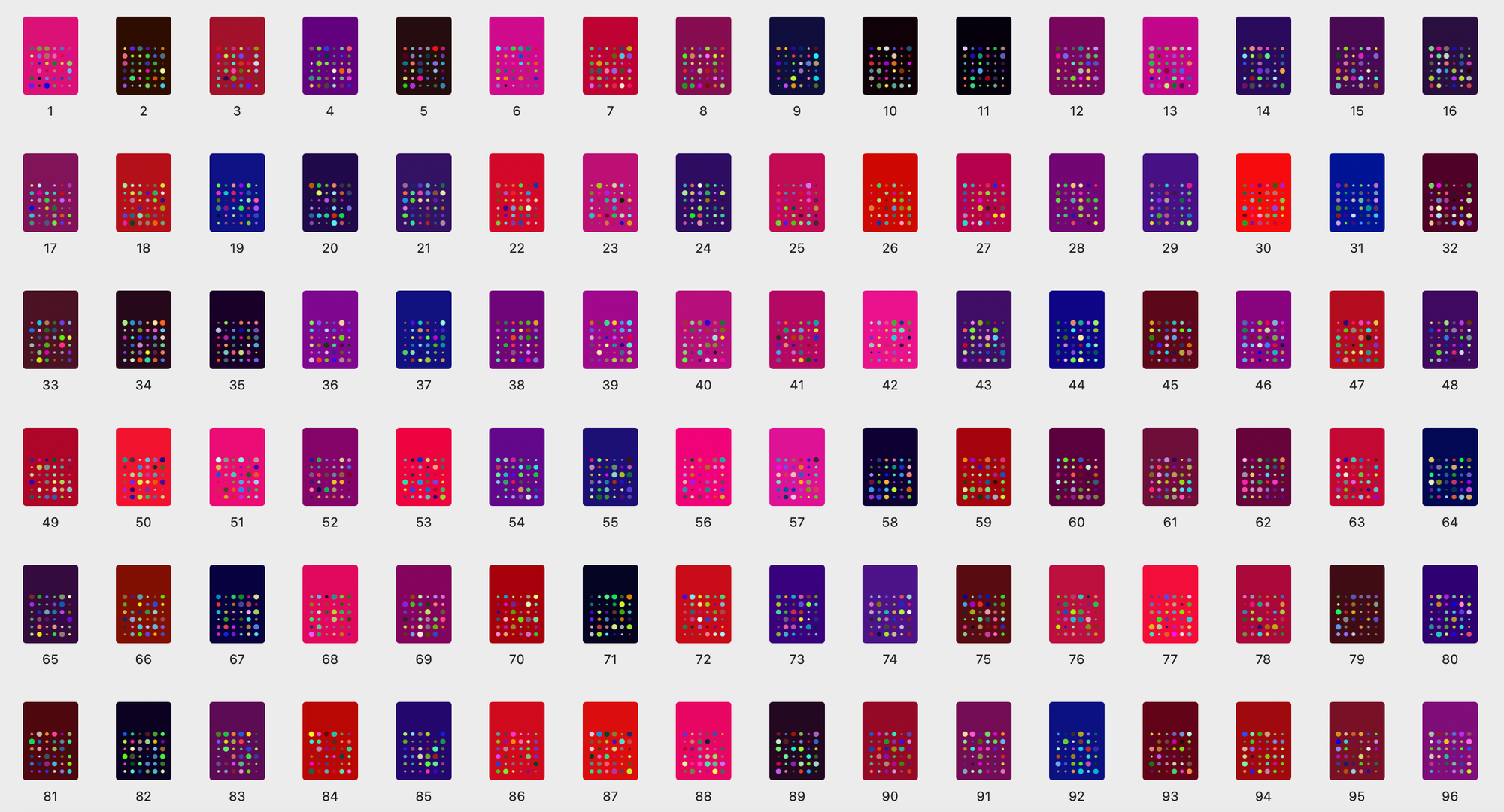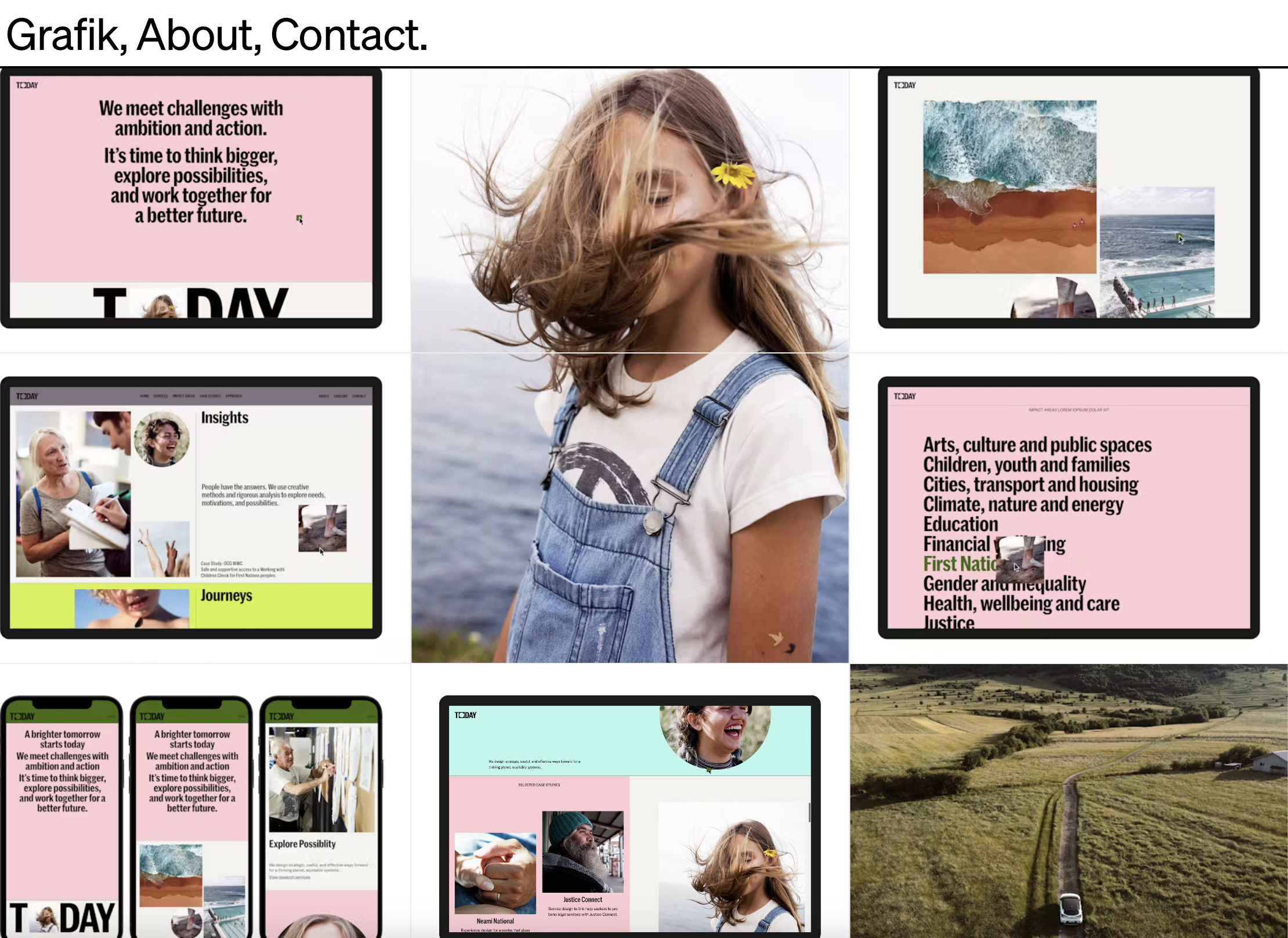Process Document

5.2 Specialist Graphic Design Technologies
During this module, I was introduced to a wide array of new technologies presented in various formats. I encountered numerous challenges and discovered fresh perspectives that broadened my understanding. Determined to push myself beyond my comfort zone, I made it my priority to fully immerse myself in the learning process.
I actively participated in all of the sessions, whether online or in person, ensuring I engaged with every opportunity to learn and absorb all the information I was being given. This approach allowed me to explore all the paths available to me, fostering a deeper understanding of the tools, concepts and methods that were introduced.
Week 1: Visual Framework
The first task we were set was to review John Maeda's 10 Laws of Simplicity and select two that resonated with us. The aim was to align these laws with our own personal reflections on technology and design, exploring how they could inform or challenge our perspectives. This required a deep dive into the principles that Maeda outlines - laws that revolve around reducing complexity, enhancing clarity and achieving balance in functionality and design. As part of this process, I researched and analysed these rules, allowing me to critically consider how they intersect with modern technology and workflow experience. I documented this exploration in detail in my blog post, where I share my thought process, examples and insights. This post can be found here.
Neurodiversity campaign:
In this task, we worked together to come up with issues people with dyslexia face within the workplace:
Find the full blog post below.

Week 2: Reflective Exploration of Emerging Technologies
In this task, we were asked to reflect on a project we had previously completed and explore how one or more of the technologies we have been introduced to could have been applied. The purpose of this task was to think critically about how emerging tools and methods could help reshape our approach to future projects, enabling us to innovate and deliver more impactful outcomes.
For my reflection, I revisited a way-finding project I completed last year. This project focused on guiding users effectively through a gym, which I rebranded in order to promptly achieve their goals. As I considered the advancements in technology which I have explored, I saw an opportunity to incorporate AR and VR into this project. These technologies have the potential to transform the user's experience, offering immersive and interactive solutions that make navigation more engaging and efficient.
By integrating AR, I could create overlays that provide real-time guidance, highlighting routes or gym equipment and offering contextual information as users navigate through the space. VR could offer a pre-navigation experience, allowing users to familiarise themselves before physically arriving at the gym or accessing their workouts from home whilst still appearing to be within the gym environment.
This reflection has not only given me ideas for enhancing past projects but has also inspired me to consider how I might integrate such tools into my future work. For a more detailed exploration of these ideas, find my blog post here.
Week 3: Workflow
This week, we were told to critically analyse our current workflow and explore tools or techniques that could help us improve our efficiency, reduce repetitive tasks or resolve specific challenges we face. The goal was to reflect on how automation and new resources can help to support ad enhance our productivity and efficiency. When researching these different technologies I was shocked at how many there were and how implementing them into my workflow dramatically increased my productivity and made getting from step A to B much simpler and time effective.
I face difficulties that sometimes make my workflow much harder and cause unnecessary stress. I find that when I have many tasks to complete, I struggle to prioritise and complete certain tasks due to forgetting about them or being unorganised. When researching task-scheduling apps, I came across Rize, which is an AI-powered time tracker which improves focus and builds better work habits. I have found this very helpful as the app runs in the background while you work, allowing you to see how productive you have been within the time you set yourself.
I also find that when researching and completing separate mini-tasks, I forget what I have already researched and, therefore, am constantly finding screenshots and little pieces of writing mid-finished that I have forgotten about and do not categorise with modules. When researching different applications, I found ‘Hazel’. This is an automation tool that organises your files based on rules that you define, moving, sorting and cleaning up files where needed. This allows me to keep my random screenshots in one place, meaning I do not forget about them and cleans my old files into a folder for me to sort through when I have a chance, allowing me to clear up space on my MacBook. Click here to see my full blog post.
Week 4: Production
This week, we were presented with a challenging 6x6 task, which involved selecting one brief from a list of 6, leading to a total of six unique outcomes. The process was both creative and structured, pushing us to think critically about how to approach and synthesise different concepts into a cohesive project.
After considering our options, we decided to focus on a brief which involved creating a personalised experience through an immersive 3D environment. This decision was driven by our interest in exploring how a 3D environment could be used to engage users on a deeper more individual level. See my blog post here to see our ideas better laid out.

The task we were set this week was to create 100 experimental unique design covers. Previously, when given these tasks, I would go away and produce each poster one by one, which is extremely strenuous and time-consuming however, after being introduced to coding, I found that this wasn't the only way to complete this task, and the alternative was much much simpler. Find my blog post below.

Week 5: Brutalist websites research task
This week's task focused on exploring and critically analysing various brutalist websites featured on https://brutalistwebsites.com/. These websites challenge traditional web design norms, often prioritising raw aesthetics and unconventional layouts over mainstream design conventions. For the task, I delved into three examples, evaluating each website's design choices, usability and overall effectiveness. I critically analysed how these designs align or deviate from traditional web design principles such as usability, accessibility and visual hierarchy. My analysis included identifying what aspects of the website work well and enhance the user experience, as well as highlighting areas where the designs create challenges for the users.
Additionally, I reflected on my overall impressions of brutalist web design. While some of the websites showcased bold creativity and originality, others seemed to compromise usability for the sake of aesthetic experimentation. This exploration allowed me to appreciate the balance between innovative design and functional user experience.
For a more detailed breakdown of my research and reflections, find my blog post below.

Reflection and summary:
This module has provided me with an invaluable opportunity to build technical skills while fostering critical thinking and innovative problem-solving. It challenged me to step outside of my comfort zone, pushing me to explore unconventional approaches and develop fresh perspectives. By doing so, I was able to embrace creativity and innovation more fully, which not only enriched my learning experience but also enhanced my ability to apply the knowledge gained practically and consistently in my work.
Additionally, tools such as Grammarly and ChatGPT have been incredibly helpful in improving my writing. As someone who struggles with writing, I found these tools to be valuable in refining my grammar, sentence structure and overall clarity. Grammarly offered real-time suggestions, helping me to spot errors and improve the flow of my writing. ChatGPT provided guidance on how to expand and refine my ideas, offering suggestions of phrasing and tone that made my writing more effective. These tools helped me to gain confidence in my writing and ensured that I could express my thoughts more clearly and professionally. This process of growth has been instrumental in shaping my approach and expanding my capabilities.
Although I, unfortunately, missed out on the Cinema 4D workshops during this module due to my own error, I recognise their potential value and impact on my skill set. The workshops would have provided a unique opportunity to deepen my understanding of 3D modelling, animation and design, which are crucial in today's creative industries. I understand gaining proficiency in tools like Cinema 4D could significantly enhance my ability to produce visually engaging content and add more depth to my projects. In the future, I am committed to revisiting these workshops or exploring similar resources to learn how Cinema 4D can contribute to my growth. By dedicating time to mastering this software, I believe I can expand my creative toolkit and better position myself for future projects, allowing me to integrate 3D design into my work in a meaningful way. This proactive approach will ensure that I can continuously improve and stay ahead in a rapidly evolving industry.